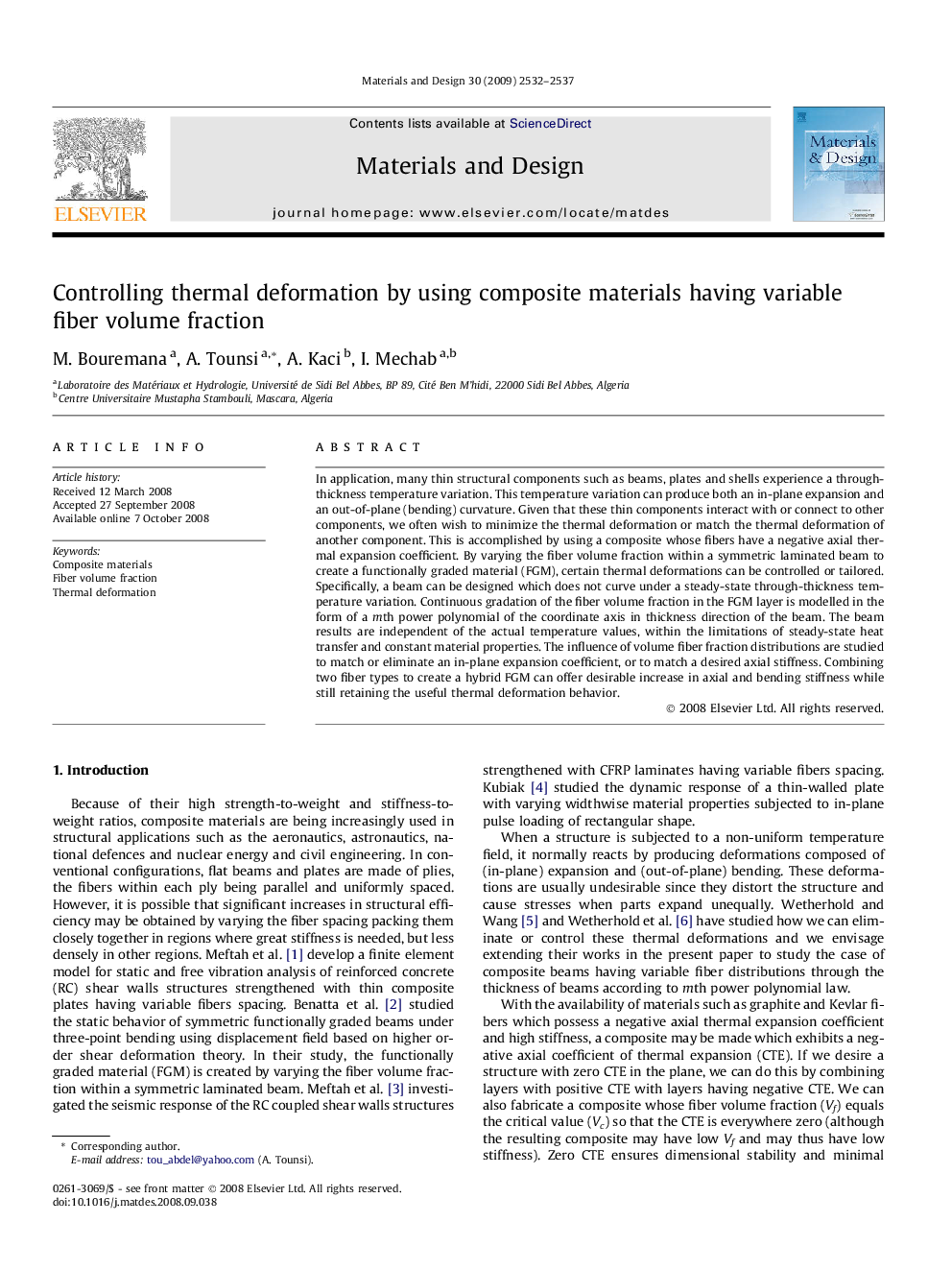| کد مقاله | کد نشریه | سال انتشار | مقاله انگلیسی | نسخه تمام متن |
|---|---|---|---|---|
| 832883 | 908127 | 2009 | 6 صفحه PDF | دانلود رایگان |

In application, many thin structural components such as beams, plates and shells experience a through-thickness temperature variation. This temperature variation can produce both an in-plane expansion and an out-of-plane (bending) curvature. Given that these thin components interact with or connect to other components, we often wish to minimize the thermal deformation or match the thermal deformation of another component. This is accomplished by using a composite whose fibers have a negative axial thermal expansion coefficient. By varying the fiber volume fraction within a symmetric laminated beam to create a functionally graded material (FGM), certain thermal deformations can be controlled or tailored. Specifically, a beam can be designed which does not curve under a steady-state through-thickness temperature variation. Continuous gradation of the fiber volume fraction in the FGM layer is modelled in the form of a mth power polynomial of the coordinate axis in thickness direction of the beam. The beam results are independent of the actual temperature values, within the limitations of steady-state heat transfer and constant material properties. The influence of volume fiber fraction distributions are studied to match or eliminate an in-plane expansion coefficient, or to match a desired axial stiffness. Combining two fiber types to create a hybrid FGM can offer desirable increase in axial and bending stiffness while still retaining the useful thermal deformation behavior.
Journal: Materials & Design - Volume 30, Issue 7, August 2009, Pages 2532–2537